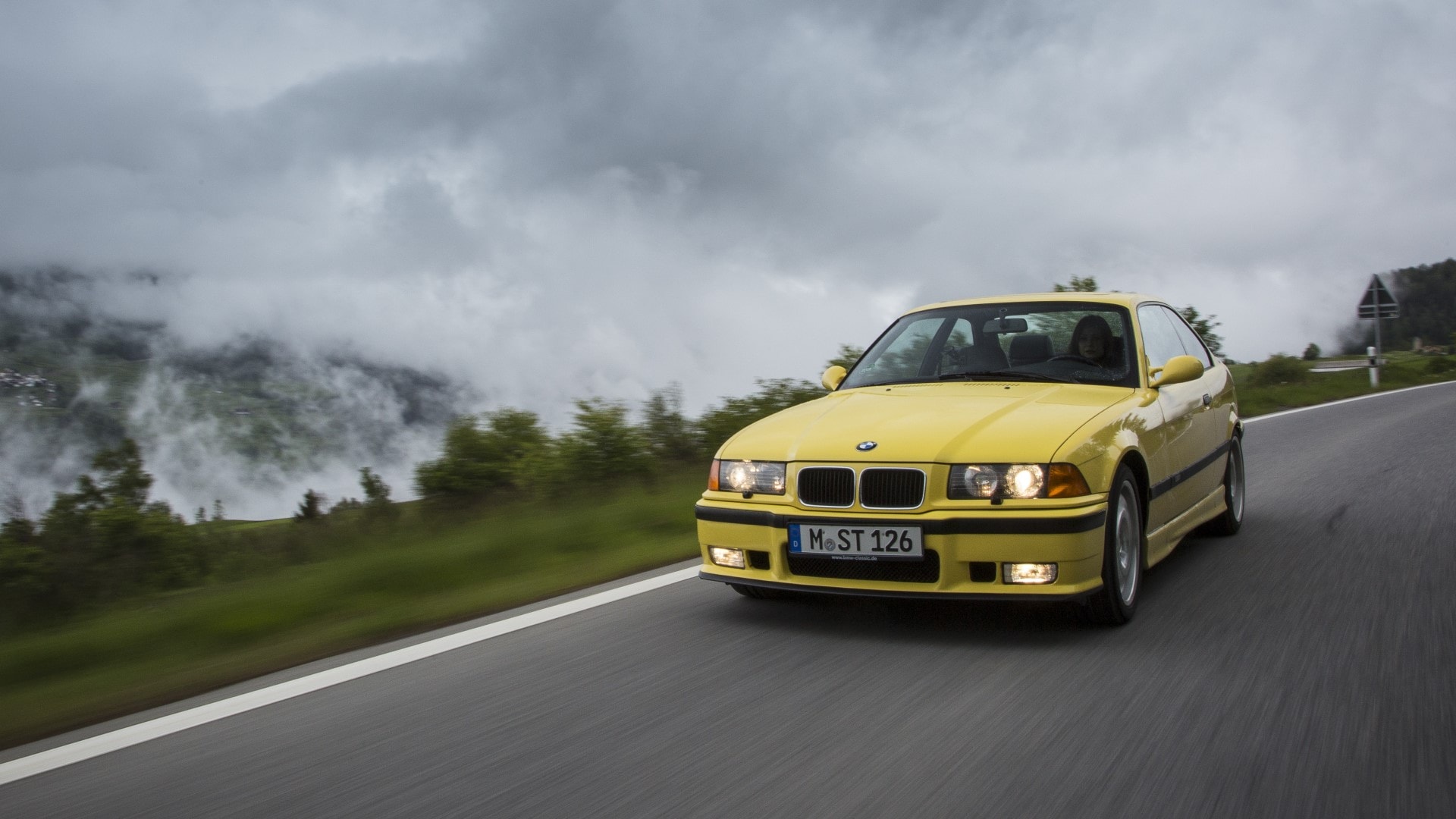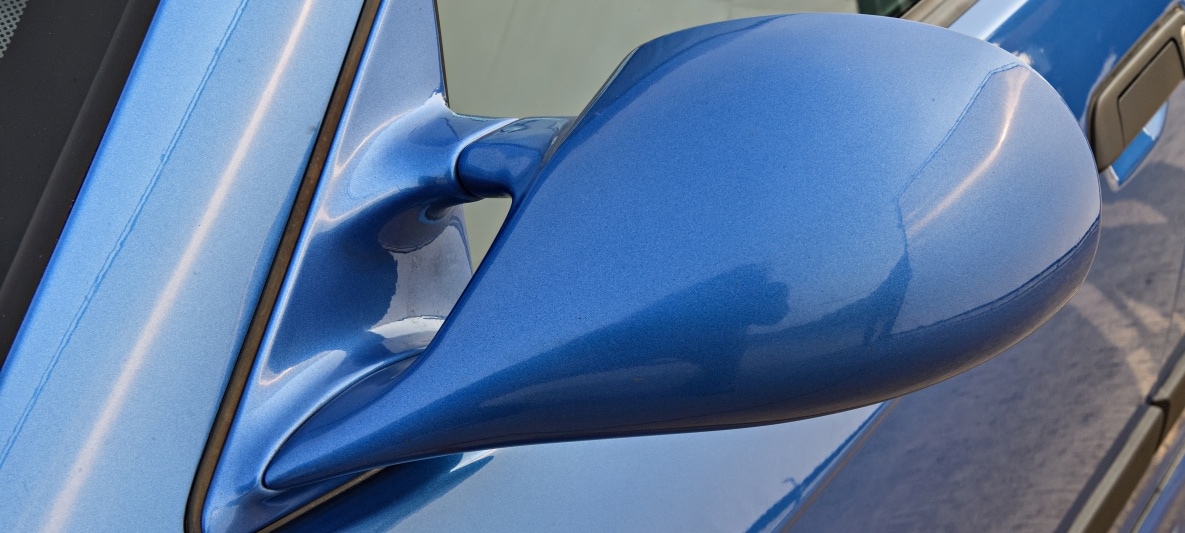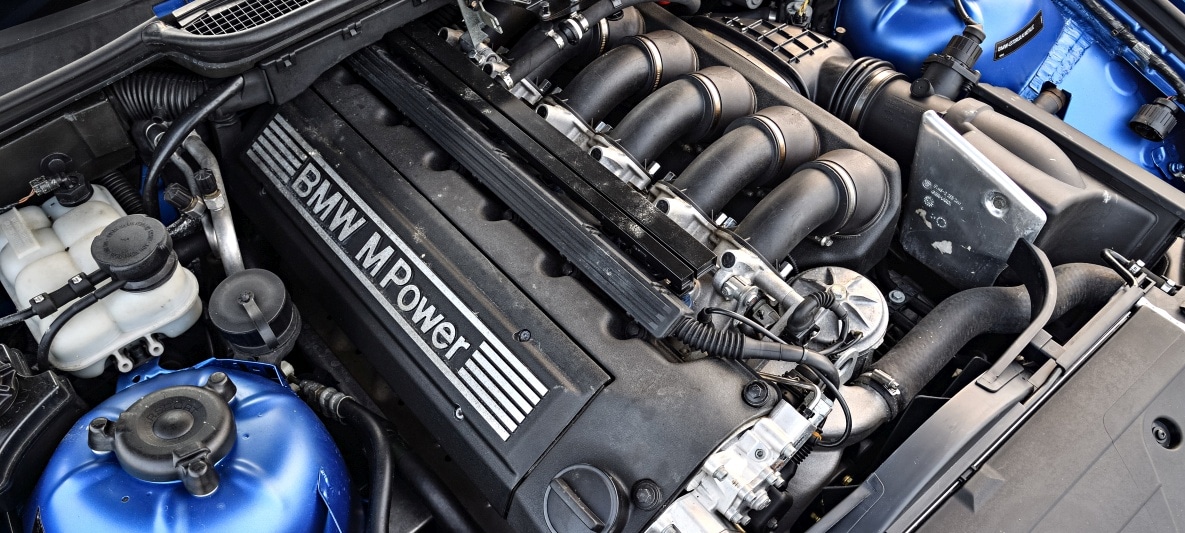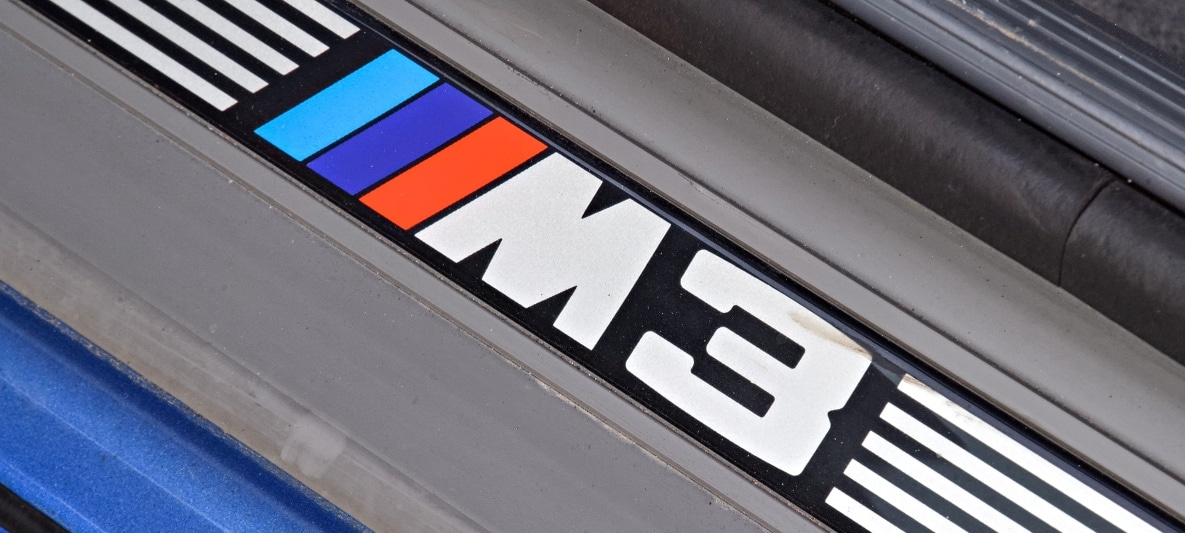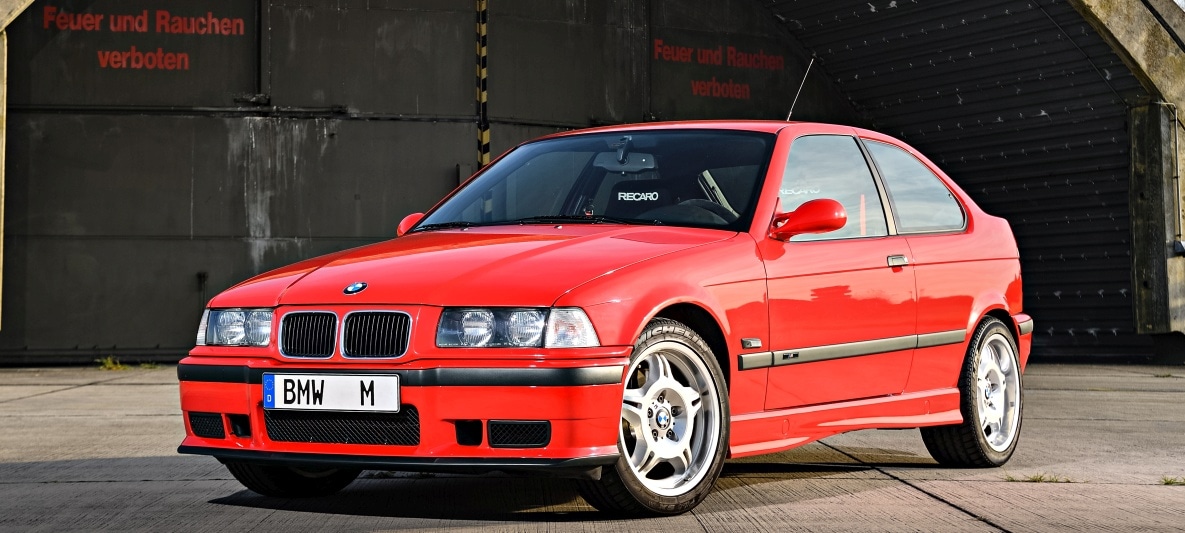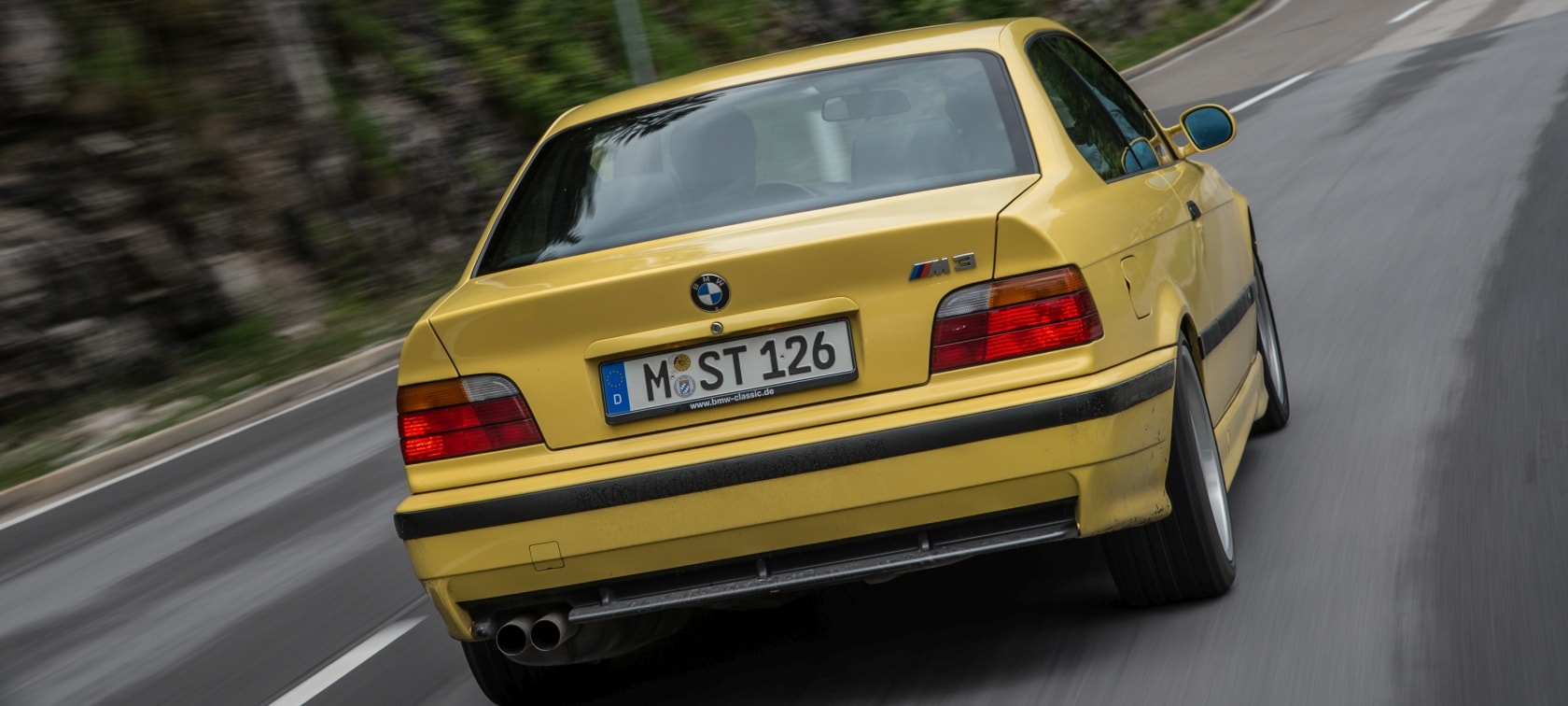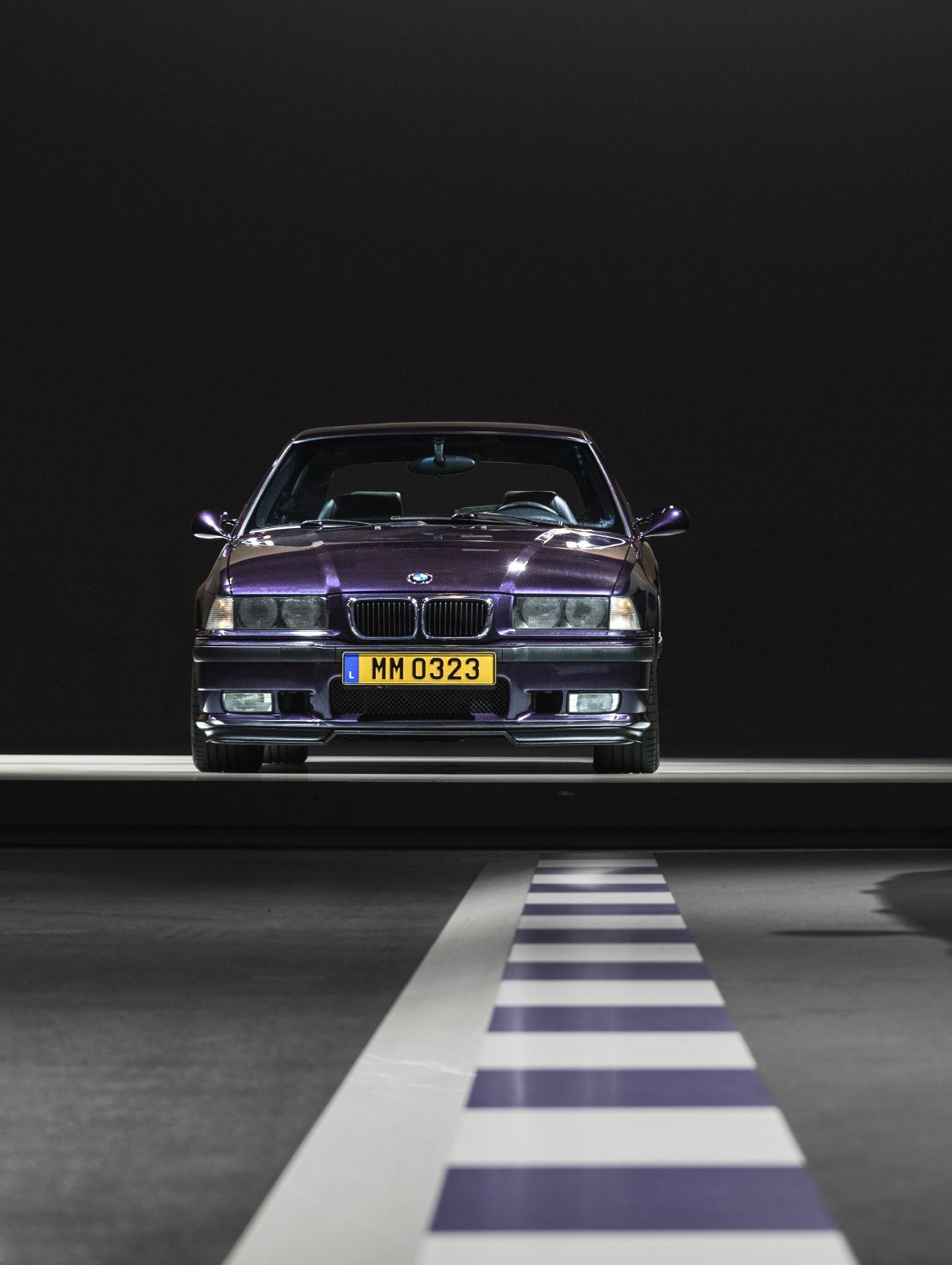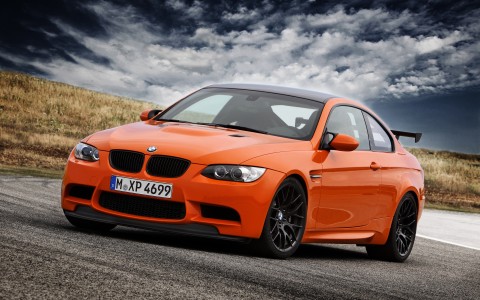In 1992, BMW M launched the next generation of its BMW M3 high-performance sports coupe. It was notable for its modern design, significantly higher power and increased comfort. On closer inspection, however, sports car fans quickly realised that the M3 E36 carried the same M specific motorsport DNA as its predecessor. Let’s take a closer look at the first BMW M3 to feature a six-cylinder engine.
5 POWERFUL FACTS:
- Second-generation BMW M3
- Production period: 1992 to 1999
- Inline 6-cylinder engine with high speed concept
- Max. output: 286 - 321 hp
- Also available as a sedan for the first time
PIONEER WITH A STRONG HERITAGE.

PIONEER WITH A STRONG HERITAGE.
When the second generation of the BMW M3 came onto the market in 1992, it initially seemed as if the engineers had educated the previously unadapted sports sedan to become a thoroughly cultivated gentleman. For many BMW M watchers, their first impression of the successor to the rebellious BMW M3 E30 was that it was relatively reserved. In fact, the second BMW M3 took it to a whole new level of everyday practicality right from the start. This was not without underlining its typical M character with the help of plenty of racing technology. Thus, the M3 E36 preserved the fire that ignited its legendary predecessor and pioneer and at the same time found its own identity on new paths.
CHARISMATIC WITH TWO FACES.

CHARISMATIC WITH TWO FACES.
The M3 E36 was designed with the engine in mind. With its debut, a 6-cylinder in-line engine made its debut in a 3-Series top model. From the outset, the characteristic and BMW-typical S50B30 naturally aspirated engine combined the best of both worlds. A silky, turbine-like run was at the top of the specifications, especially at a partial load. Nevertheless, its heart should be emotional and feel like an uncompromising racing engine. After a very short time, experts and sports car enthusiasts all over the world were convinced that the engineers at BMW M GmbH had achieved this aim in full.
NOT AFRAID OF NEW IDEAS.
With the BMW M3 E36, the limits of what is feasible were replenished. One of its great innovations was the variable camshaft adjustment, VANOS for short, which was used here for the first time. This forward-looking technology gave developers completely new freedom in engine optimization for different speed ranges. The VANOS always adjusts the camshafts in such a way that maximum torque is available both in the partial load range and under full load. The unit draws 286 hp from 3.0 litres, enough for an impressive litre output – even by today’s standards – in classic naturally-aspirated engines.

286 hp was the maximum output of the BMW M3 when it first went on sale. This enabled it to achieve 95.7 hp or 70.4 kW output per litre cubic capacity – not even sports cars from Italian small-series manufacturers could boast this at the beginning of the 1990s.
WOLF IN SHEEP’S CLOTHING.

WOLF IN SHEEP’S CLOTHING.
Visually, the BMW M3 E36 showed its restrained side from the very beginning. Those who are not familiar with the details of the top model of the E36 series may not even be able to see the sheer power hidden under its straight-line body. However, the aerodynamically elaborate M side mirrors, which measurably reduce air resistance, are distinguishing features. In addition to this, there were other aprons at the front and rear, as well as the special 17-inch wheels. BMW M also lowered the chassis of the high-performance 3-Series by a good three centimetres. This new proximity to the asphalt not only benefited the vehicle’s centre of gravity and handling, but also gave the M3 a much more serene stance than its more civilised brothers.
MORE DISPLACEMENT. MORE POWER.

MORE DISPLACEMENT. MORE POWER.
In the autumn of 1995, BMW M subjected the M3 E36 to a model upgrade. While the externally visible changes were rather limited to details like the now-white turn signal lenses and a retouching of the kidneys’ design, all kinds of technology moved in under the sheet metal dressing. The engineers lifted the M3 E36 to a new level, especially on the engine side. As well as this facelift, the S50B30 was also further developed. Thanks to the S50B32’s now 3.2-litre displacement and 321 hp, the BMW M3 was able to sprint to 100 km/h in 5.5 seconds, about half a second faster than before.
The increased power was transmitted to the wheels via the new 6-speed manual transmission, which was linked to the engine with five speed steps instead of the previous counterpart. Those who craved for even more innovation could also opt for the new sequential M transmission from 1996 onwards. This was an automated conventional six-speed manual transmission that M GmbH used for the first time in the E36, ahead of dedicated sports car manufacturers from all over the world. In order to keep the new potential of the M3 E36 in check at all times, the so-called compound brake system was used from then on. Its new design reduced the unsprung masses and made them much less sensitive to thermal stress.
UNDER THE RADAR.

UNDER THE RADAR.
The BMW M3 GT.
At the end of 1994, only months before the BMW M3 E36 was extensively updated, M GmbH delighted fans of the series with the only genuine special model. The BMW M3 GT E36 was limited to 350 units and was offered exclusively in British Racing Green. Innovations in relation to its engine gave a foretaste of the model-maintained M3 E36 and increased the performance with unchanged cubic capacity to 217 kW (295 hp). In addition, modifications were made to improve performance, such as the standard rear spoiler and aluminium doors.
THE CRADLE OF COMPACT SPORTS CARS FROM BMW M.
THE CRADLE OF COMPACT SPORTS CARS FROM BMW M.
Even less known than the BMW M3 GT is the BMW M3 Compact. With its unusual combination of characteristically short rear overhang, lower weight and typical M3 ingredients, it would undoubtedly have been the compact sports car of its time. In fact, the model did not go beyond being a prototype. In addition to the significantly shorter body, the interior is particularly striking. The M GmbH engineers decided to do without everything that was not absolutely necessary and instead equipped the M3 Compact with Racaro sports seats and a roll bar. Another interesting detail of the concept car is its four-pipe exhaust system, which offered a foretaste of the BMW M3 E46.
LESS POWER BEYOND EUROPE.
For the North American market, BMW M launched an M3 that was independent of the E36 series. Initially, it was even available as the 325is in showrooms. Equipped with increased displacement, the S50B30Us installed from 1994 to mid-1996 brought it to 243 hp/179 kW and 305 Nm torque. The S52B32US used from 1996 reached the same peak power but could balance up to 320 Nm. The European versions of the M3 E36 never officially entered the American market.

